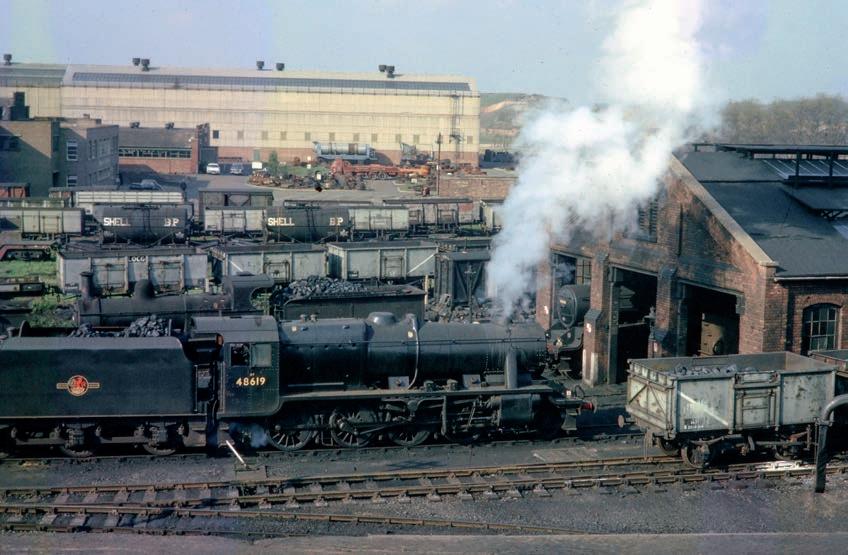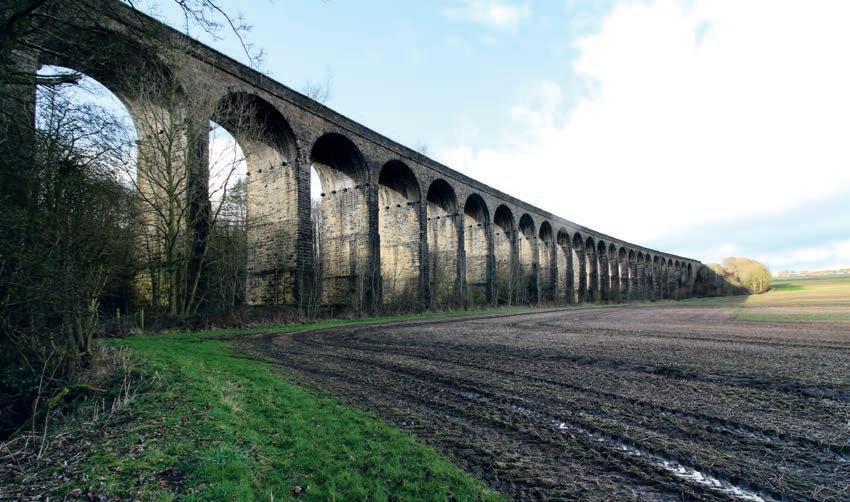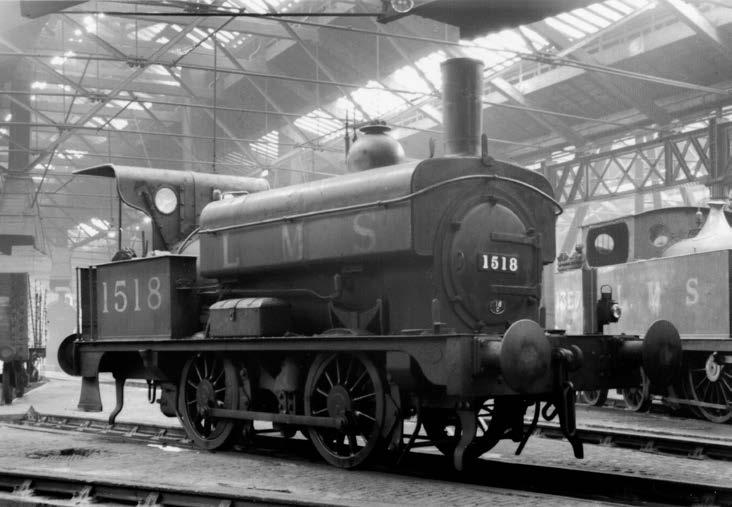The history periodical for students of the LMS, pre-grouping constituents and BR(M)
Issue no. 6 • November 2024
CONTENTS
A potential ‘Runaway’ train over Dava 24-31
Motive power at Bury shed during the latter years 32-39
43049 at Birmingham New Street 40-41 Barnt Green 42-47
The British Railways ‘Clans’ – 1951-1966 48-58 coming soon: The R.C.Riley Colour Collection 59 End of steam rail tours 60-63 Liverpool Riverside 64-71 The Horwich ‘Crab’ Moguls 72-79 The Platform End 80
25th August 1964 • Ex-GWR 68XX ‘Grange’ Class 5MT 4-6-0 No. 6858 Woolston Grange at Huddersfield MPD awaiting its return south.
Photo: Robert Anderson/The Transport Library
Penistone viaduct viewed from the south east. Photo: Author
The two ‘Hikers’ that replaced D5115 at Perth are shown on other duties. Above: 27th April 1957 • No. 44998 leaves Perth General Station with a relatively heavy load of passenger coaches. Below: 28th August 1959 • No. 44698 takes water at Grantown-on-Spey (West) with a southbound passenger service over the original Highland main line. The latter locomotive was a regular on the original Highland route, and is reputed as achieving the fastest time ever between Grantown-on-Spey and Dava Summit. Photo: W. A. C. Smith © Transport Treasury
16th June 1962 • Once again Stanier 4-6-0 No. 44978 appears on the scene, taking ‘centre stage’ at Aviemore Motive Power Depot whilst being prepared for further duties.
Boat of Garten • The end of the platform beyond the station house can be clearly seen, showing how short a distance Jock Hay had over sixty years ago to stop the train. This scene shows marvellous preservation work by the Strathspey Railway members. Photo: Ian Lamb
Photo: Leslie Freeman © Transport Treasury
3rd February 1952 • Ex-LYR Aspinall Class 5 2-4-2T No.
50647 on Bury shed.
Jinty 0-6-0T No. 47584, at Buckley Wells approaching Bury Bolton Street. The shed can be seen in the left background.
26th June 1957 • Clan No. 72003 Clan Fraser departs with a freight from Larkfield Sidings, Glasgow.
Photo: Neville Stead Collection © Transport Treasury
16th April 1956 • Clan No. 72003 Clan Fraser about to leave Polmadie shed to back down onto its train at Glasgow Central to work a Manchester and Liverpool express. Clan Fraser of Lovat, a Scottish clan of French origin associated with Inverness and the surrounding area from the 13th Century. Clan motto: Je suis prest (I am ready).
LIVERPOOL RIVERSIDE
Liverpool Riverside was a railway station owned by the Mersey Docks and Harbour Board (MD&HB) and located at Liverpool’s Pier Head ocean liner terminal.
Towards the end of the nineteenth century Liverpool had become the main port for the trans-Atlantic passenger trade. This, however, was threatened in the 1880s due to the port of Southampton taking trade away from Liverpool, one of the reasons for this was the passenger railway facilities that had been developed there close to the berths from which the ships sailed. A floating landing stage at Princes Dock, close to the Pier Head, was used at Liverpool, none of the major railway termini were located near this location, and passengers with their luggage transferring between trains and ships had to be transported by road through crowded streets. The MD&HB obviously did not want to lose passenger liner trade to Southampton so a decision was made to build a passenger station adjacent to the Princes Landing Stage.
The station was opened on 12th June 1895 and was located at the end of a ½ mile branch that connected to the MD&HB ‘main line’ which ran north/south along the length of the docks (a dockside tramway was worked at that time by horses).
A south-to-east spur was put in from the MD&HB line to the
London & North Western Railway (LNWR) Waterloo Goods station which gave access to the real main line railway that had a fast route to London Euston.
Comprised of two main platforms of 795 feet and 698 feet, with a centre release track between them, and a 560 feet bay platform, all covered by a roof. Beyond the buffers the station entrance was a two-storey building, the first floor containing MD&HB offices, while on the ground floor there were booking facilities, waiting rooms, an inspector’s office and a refreshment room. It was rebuilt in 1945 after bomb damage. On the opposite side of Princes Parade from the station were the Customs examination rooms and the floating Princes Landing Stage, where the ships berthed.
On the opening day the first passenger train to use Riverside station was an LNWR train from Stafford which included through coaches from London Euston, attached to another train, the service was to connect with the sailing of the White Star company liner ‘Germanic’.
The MD&HB had intended that Riverside station would be used by all of the main line railway companies which provided passenger services to Liverpool. As well as the LNWR, the Great Northern Railway (GNR), the Lancashire & Yorkshire Railway
22nd June 1961 • Hughes-Fowler ‘Crab’ 2-6-0 No. 42742 passes through Newton-on-Ayr with an up freight.
J & J Collection, Sid Rickard
Photo:
August 1939 • Samuel Johnson Class 1134 0-4-0T No. 1518 pictured in its LMS guise inside Derby shed. Built by the Midland Railway at Derby Works in 1897 as No. 1134A it was renumbered in 1907 to 1518. The class totalled 10 engines, all built at Derby between 1897 and 1903. They had various cab arrangements, open back and fully enclosed both with open sides, during BR days they even had a fully enclosed cab with sides extending up from the bunkers. After a working life of over 60 years No. 1518 was withdrawn by British Railways from Lower Darwen (24D) in Feburary 1958.
27th
Photo: Les W. Perkins © Transport Treasury














